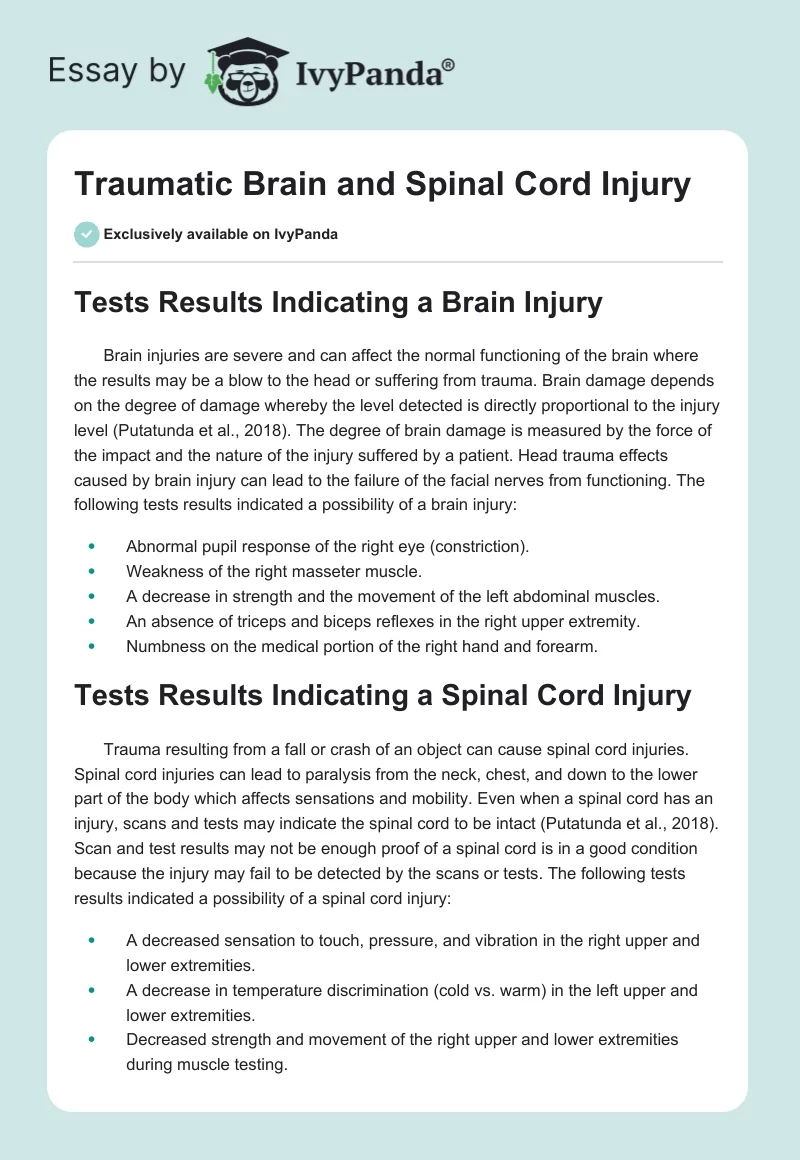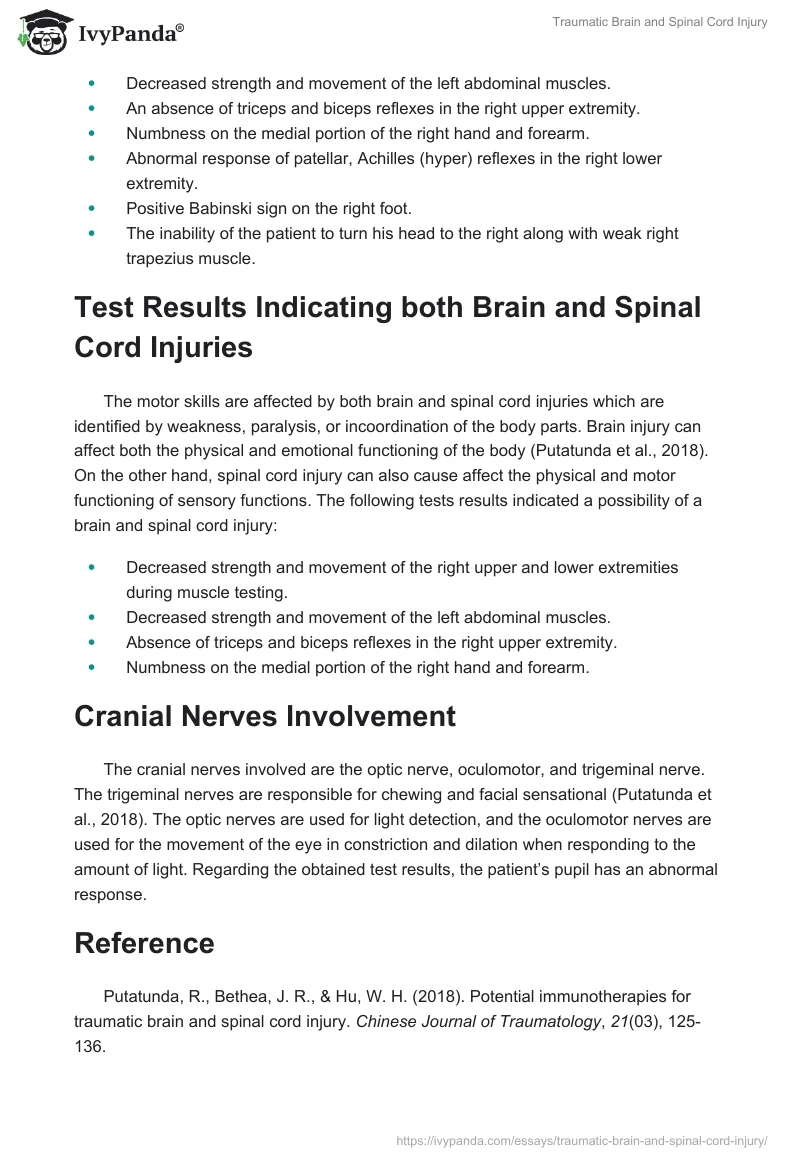Tests Results Indicating a Brain Injury
Brain injuries are severe and can affect the normal functioning of the brain where the results may be a blow to the head or suffering from trauma. Brain damage depends on the degree of damage whereby the level detected is directly proportional to the injury level (Putatunda et al., 2018). The degree of brain damage is measured by the force of the impact and the nature of the injury suffered by a patient. Head trauma effects caused by brain injury can lead to the failure of the facial nerves from functioning. The following tests results indicated a possibility of a brain injury:
- Abnormal pupil response of the right eye (constriction).
- Weakness of the right masseter muscle.
- A decrease in strength and the movement of the left abdominal muscles.
- An absence of triceps and biceps reflexes in the right upper extremity.
- Numbness on the medical portion of the right hand and forearm.
Tests Results Indicating a Spinal Cord Injury
Trauma resulting from a fall or crash of an object can cause spinal cord injuries. Spinal cord injuries can lead to paralysis from the neck, chest, and down to the lower part of the body which affects sensations and mobility. Even when a spinal cord has an injury, scans and tests may indicate the spinal cord to be intact (Putatunda et al., 2018). Scan and test results may not be enough proof of a spinal cord is in a good condition because the injury may fail to be detected by the scans or tests. The following tests results indicated a possibility of a spinal cord injury:
- A decreased sensation to touch, pressure, and vibration in the right upper and lower extremities.
- A decrease in temperature discrimination (cold vs. warm) in the left upper and lower extremities.
- Decreased strength and movement of the right upper and lower extremities during muscle testing.
- Decreased strength and movement of the left abdominal muscles.
- An absence of triceps and biceps reflexes in the right upper extremity.
- Numbness on the medial portion of the right hand and forearm.
- Abnormal response of patellar, Achilles (hyper) reflexes in the right lower extremity.
- Positive Babinski sign on the right foot.
- The inability of the patient to turn his head to the right along with weak right trapezius muscle.
Test Results Indicating both Brain and Spinal Cord Injuries
The motor skills are affected by both brain and spinal cord injuries which are identified by weakness, paralysis, or incoordination of the body parts. Brain injury can affect both the physical and emotional functioning of the body (Putatunda et al., 2018). On the other hand, spinal cord injury can also cause affect the physical and motor functioning of sensory functions. The following tests results indicated a possibility of a brain and spinal cord injury:
- Decreased strength and movement of the right upper and lower extremities during muscle testing.
- Decreased strength and movement of the left abdominal muscles.
- Absence of triceps and biceps reflexes in the right upper extremity.
- Numbness on the medial portion of the right hand and forearm.
Cranial Nerves Involvement
The cranial nerves involved are the optic nerve, oculomotor, and trigeminal nerve. The trigeminal nerves are responsible for chewing and facial sensational (Putatunda et al., 2018). The optic nerves are used for light detection, and the oculomotor nerves are used for the movement of the eye in constriction and dilation when responding to the amount of light. Regarding the obtained test results, the patient’s pupil has an abnormal response.
Reference
Putatunda, R., Bethea, J. R., & Hu, W. H. (2018). Potential immunotherapies for traumatic brain and spinal cord injury. Chinese Journal of Traumatology, 21(03), 125-136.


